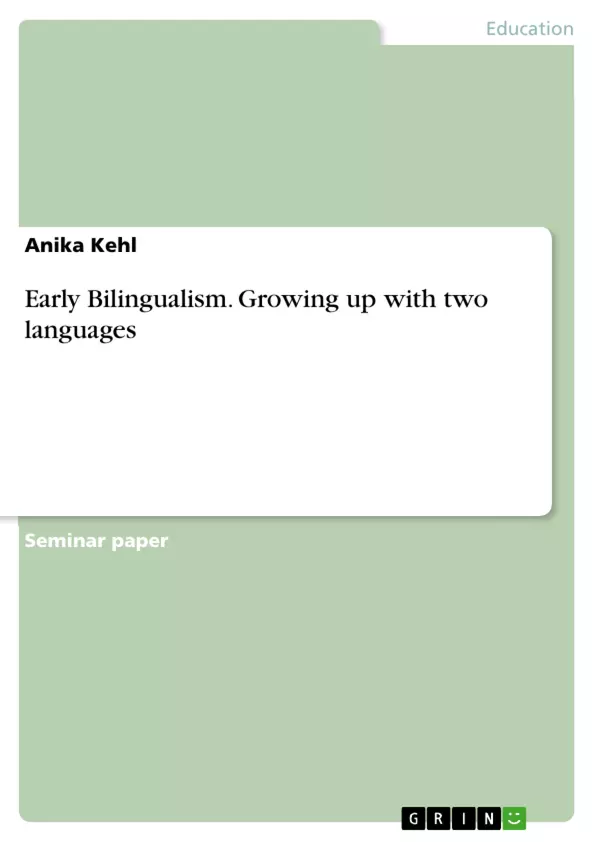There are millions of children around the world who grow up bilingually or even multilingually. They need to know many different languages to be able to communicate with their parents, their teachers, with the people they buy their groceries from, or with officials who might all speak a different language. For those children, for their parents and the society that surrounds those it is more than normal to be multilingual. Over the past decades the topic of bilingualism has become more and more important in the western part of the world too. There are many families who start teaching their children two and more languages but it is also still a subject that is highly debated between scholars from all over the world. People are afraid that teaching two languages to a child might harm his or her development. They do not want to overburden their children or cause any severe damages. Therefore many parents and caretakers still decide for one language which they will teach to their child(ren).
This paper is going to analyse some aspects of the question how children become bilinguals and which difficulties might occur along the way while trying to prove that children are very well able to learn two and even more languages from birth. After starting out with a short personal introduction, the terms ‘bilingualism’, ‘early bilingualism’ and ‘late bilingualism’ are going to be defined. Afterwards types of child language acquisition are explained and two different theses on how children become bilingual are shortly looked at. It is going to be looked at some specialities in child language acquisition and different language characteristics of early bilingual speech are highlighted. In conclusion it is going to be looked at some possibilities to support children in their bilingual development.
Inhaltsverzeichnis (Table of Contents)
- Introduction.
- Personal Experience
- General Aspects..
- Definition of bilingualism
- Early and late bilingualism......
- Types of child language acquisition
- Two theses..
- Bilingual and monolingual first language acquisition compared
- Bilingual Language Acquisition in children...
- Language characteristics in early bilingual speech
- Code-switching..
- Mixing
- Interference....
- Conclusion.
Zielsetzung und Themenschwerpunkte (Objectives and Key Themes)
This paper aims to investigate the process of children becoming bilingual, exploring the challenges and possibilities associated with early bilingualism. The paper will argue that children are capable of learning two or more languages from birth.
- Definition and characteristics of bilingualism
- Comparison of early and late bilingual acquisition
- Types of child language acquisition
- Language characteristics in early bilingual speech, including code-switching, mixing, and interference
- Support for children in their bilingual development
Zusammenfassung der Kapitel (Chapter Summaries)
- Introduction: This chapter provides an overview of the topic of early bilingualism, addressing the historical perception of bilingualism as potentially harmful and contrasting it with modern research suggesting its positive effects. It also discusses the growing importance of bilingualism in a globalized world.
- Personal Experience: This chapter shares the author's personal experience with two young girls learning English and German, offering insights into how they developed their bilingual skills. It highlights the "one parent one language" system and the challenges and rewards of raising bilingual children.
- General Aspects: This chapter delves into the definition of bilingualism, presenting various perspectives and the difficulty of defining it definitively. It explores different approaches to measuring bilingualism and highlights the subjectivity of self-reporting.
Schlüsselwörter (Keywords)
The primary focus of this paper is on early bilingualism, exploring the acquisition of two or more languages from childhood. The key themes include language development, code-switching, mixing, interference, and the benefits and challenges associated with raising bilingual children.
- Citation du texte
- Anika Kehl (Auteur), 2010, Early Bilingualism. Growing up with two languages, Munich, GRIN Verlag, https://www.grin.com/document/279061



